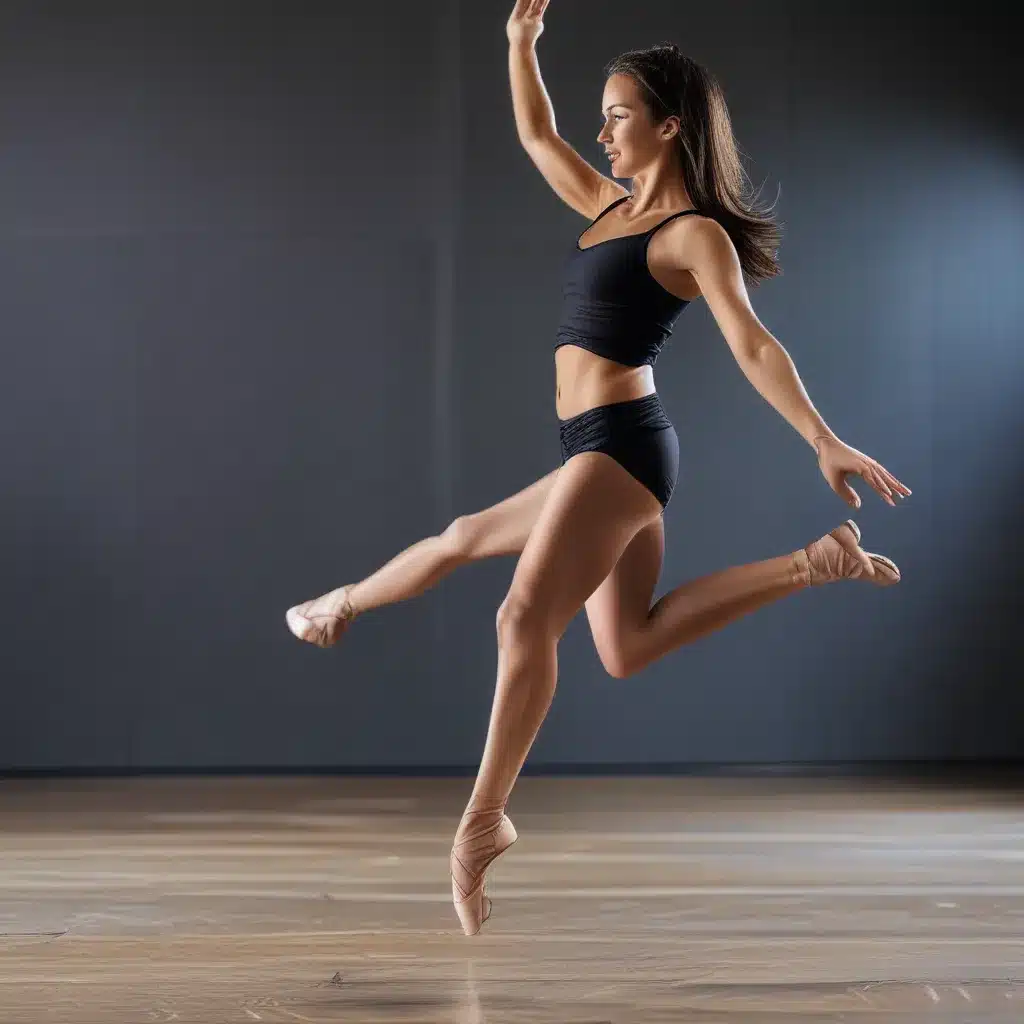
The Secrets to Soaring Like a Graceful Eagle
As a dance instructor, I’ve seen it all when it comes to jumping technique. From the eager newbies whose leaps resemble a flat-footed stomp, to the seasoned pros who seem to effortlessly defy gravity. And let me tell you, mastering the art of elevation is no easy feat. But fear not, my fellow dancers! I’m here to share the secrets that will have you jumping higher, landing softer, and leaving your audience in awe.
Aligning the Foundation
Let’s start with the foundation, shall we? Proper alignment is the key to quality jumping, my friends. Imagine your body as a stack of stones – the head, the torso, the pelvis, the knees, the feet – all neatly balanced on top of one another. If one stone is out of place, it throws the entire structure off-kilter, slowing down your jump and reducing its height.
What keeps those stones in place? A strong core, my friends. Now, I’m not talking about a rigid, pogo-stick-like posture. No, no, no. The center needs to be strong and active, allowing the rest of your body to stay connected without added tension. Think of it like a coiled spring, ready to release and propel you into the air.
And let’s not forget the feet – the unsung heroes of the jumping world. Those ankles, or more accurately, the tarsus, should never roll in or sickle before or during takeoff. Instead, imagine a feeling of widening and lengthening through the feet and toes, using the entire foot, including the heel, for optimal leverage.
Channeling the Power
Now that we’ve got the foundation sorted, let’s talk about harnessing that power. As your legs lengthen and your body leaves the ground, remember that vertical height is greatly increased when the feet roll sharply through to pointed toes beneath the pelvis. Imagine your feet extending and piercing the sand beneath your toes as you jump into the air. As the book Dance Imagery for Technique and Performance by Eric Franklin suggests, this visualization can really help you maximize your jumping potential.
But wait, there’s more! To further strengthen those all-important feet, try practicing good foot articulation. Articulate each action of the foot when rolling through in tendu, dégagé, tendu jeté, and other battement exercises. And don’t forget about resistance training with exercise bands as homework – that’ll help you build the necessary strength for both takeoff and landing.
Keeping It Smooth and Controlled
Now, I know what you’re thinking: “But what about the arms and shoulders? Surely, they play a role in all this jumping business?” Well, you’re absolutely right, my friends. But here’s the thing – bringing tension into those areas as you leave the ground is not effective in getting good height. Instead, try redirecting your focus to other parts of the body.
One of my favorite visualizations is to imagine attaching rocket boosters to your sit bones. This gives a nice idea of the downward force needed to shoot your body up into the air and, like the harness image, encourages the feeling of lift from beneath the pelvis. Imagine filling the space with your jump, landing, and rebounding on the downbeat, just like the rhythm of your clapping hands.
And let’s not forget the importance of landing, my friends. Your teachers have probably yelled “Toe-ball-heel!” at you at least a few times, and for good reason. Articulating the feet is vital in sticking that landing. But it’s not just the feet – the whole leg should arrive at the floor extended, rather than bent, to provide the most cushioning. Maintain that alignment by feeling a reach through the top of the head, not the chin, throughout the entire jump.
Breathing and Musicality
Ah, but we’re not done yet! Proper breathing during jumps, particularly if you’re doing a series of sautés, can make a world of difference. Experiment with exhaling on the jump or the landing, and see what works best for you. Awareness of your breath will improve your height and help release any excess tension.
And let’s not forget the music, my friends. Listen to the timing and tempo of the music or rhythm accompanying your movement, and try to fill that space with your jump, land, and rebound. Imagine your hands clapping in time, and let your body follow suit.
Putting It All Together
Now, I know what you’re thinking: “Wow, that’s a lot of information to remember!” And you’re absolutely right. Mastering the art of elevation is no easy feat, but with dedicated practice and a little bit of creativity, you’ll be soaring through the air like a graceful eagle in no time.
Remember, the secret recipe for jumping greatness is not so secret after all – it’s the same hard work that goes into most everything in dance: proper alignment, solid technique, and practice, practice, practice. And who knows, maybe one day you’ll be performing on the stage of the Musical Theater Center, wowing the audience with your jaw-dropping leaps and bounds.
So, what are you waiting for, my fellow dancers? Lace up those shoes, engage that core, and let’s get jumping!

